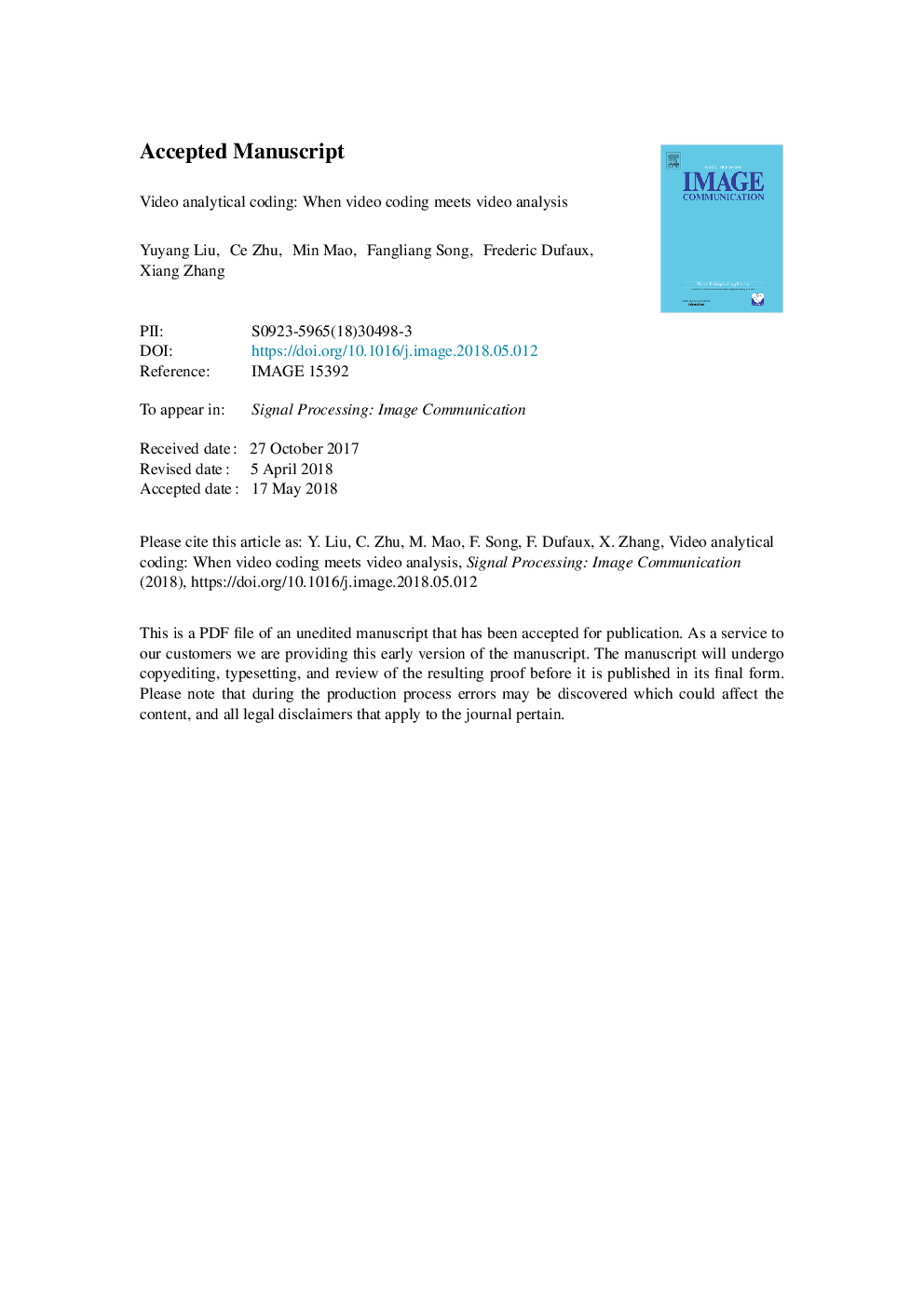| Article ID | Journal | Published Year | Pages | File Type |
|---|---|---|---|---|
| 6941436 | Signal Processing: Image Communication | 2018 | 18 Pages |
Abstract
Leveraging on the properties of human visual system, most of the well-designed video coding standards utilize rate-distortion optimization techniques by maximizing a fidelity cost function (e.g., peak signal noise ratio, PSNR) under an available bit rate budget constrain. However, a huge amount of video data is consumed by computers rather than by human beings in several application scenarios. In view of this, this paper proposes a new coding framework called video analytical coding (VAC) for video analysis. We use the term “analytical distortion” to denote the difference of video analysis performance when video quality degrades and analytical distortion is estimated by compression distortion. Meanwhile, we develop a new rate-analytical-distortion optimization (RADO) method to trade off the bit rate and the analytical distortion. Specifically, we consider moving object detection as the analysis task and develop a rate analytical distortion (RAD) model and a quantization parameter adaptation strategy for video coding, where the analytical distortion is related to the object detection performance represented as F1-measure. Experimental results show that the performance of the video analysis task can be significantly improved (up to 40% reduction of analytical distortion).
Related Topics
Physical Sciences and Engineering
Computer Science
Computer Vision and Pattern Recognition
Authors
Yuyang Liu, Ce Zhu, Min Mao, Fangliang Song, Frederic Dufaux, Xiang Zhang,
